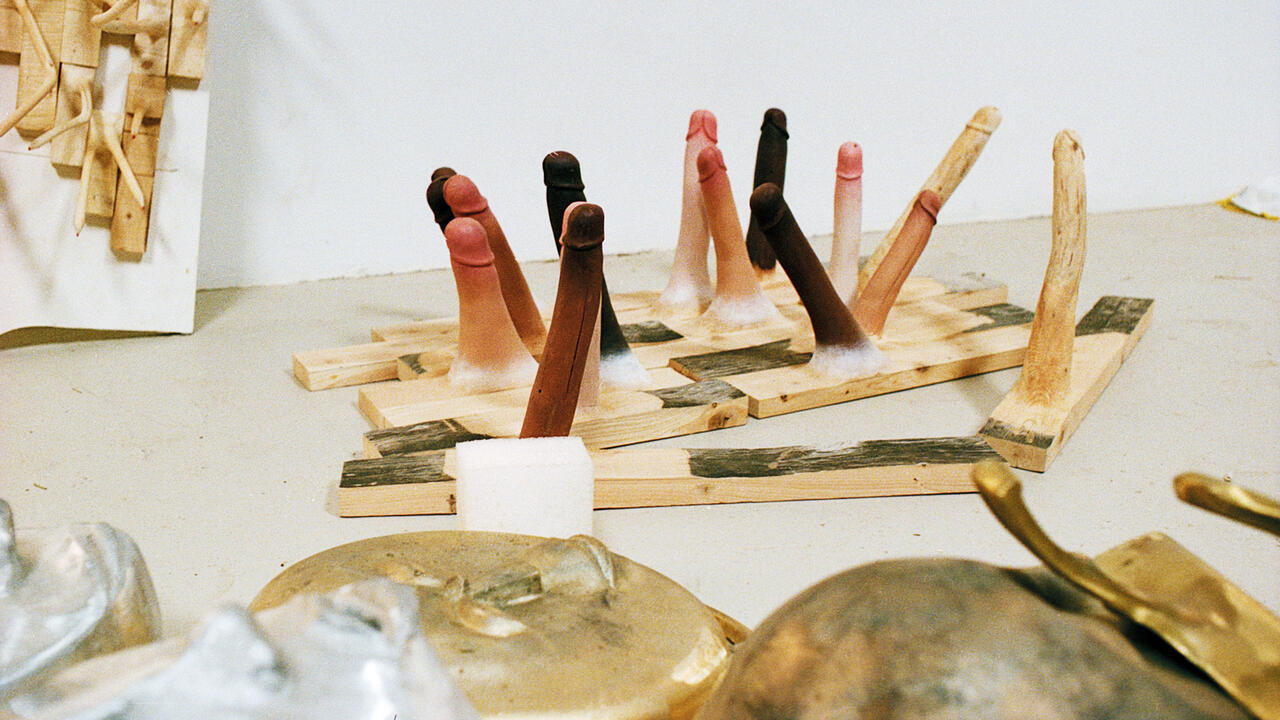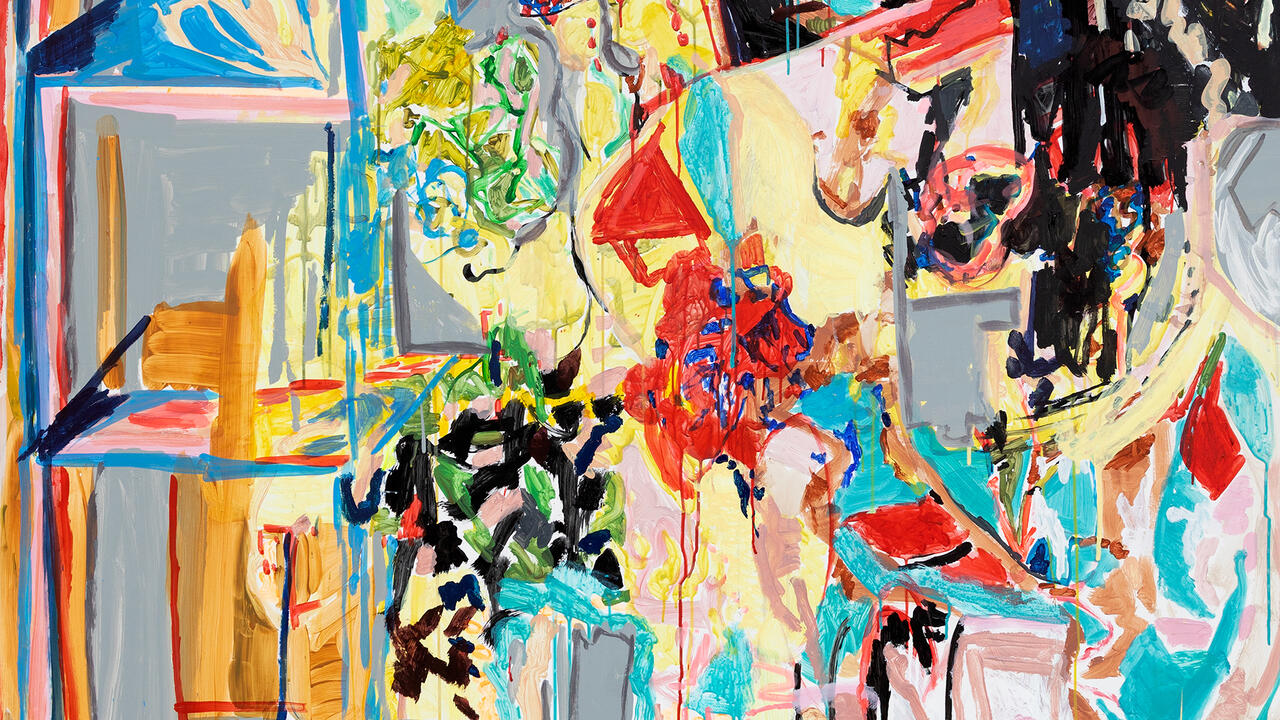Alex Dordoy
The Modern Institute, Glasgow, UK
The Modern Institute, Glasgow, UK

Alex Dordoy is fascinated by the disconnect between the physical and the virtual, the real and the what-could-have-been. The London-based artist, who graduated from the Glasgow School of Art in 2007, describes a series of three new paintings in his most recent exhibition as ‘photorealist, psychedelic mindscapes’, a mangling of definitions that captures their detailed diversions. In 2009, Dordoy’s first solo show at The Modern Institute, ‘Winner’, established an interest in exploring painting’s relationship with sculptural forms, both found and constructed; last year, a second exhibition comprised predominantly three-dimensional work, much of which exuded a sense of collapse and incompleteness. In this latest show, there was also a feeling of something being not quite right, of materials purposely mismatched and perceptions skewed. Featuring paintings on canvas, plaster objects, digital prints and a wall piece, there were two dominant motifs: the sculptural form of an unfolded paper airplane cast in plaster, and a digitally manipulated image of the female South African middle-distance runner Caster Semenya, whose gender was infamously questioned during the 2009 World Athletics Championships.
The exact significance of the athlete was left open, although Semenya’s sexual ambiguity and the idea of being between states was surely relevant. The three large oil paintings – which the artist conceived as a series – were composed in Photosåhop and then meticulously painted on canvas. Their titles provide a narrative of sorts, evoking a catastrophic event and offering oblique clues. In A halo of mist as a warning (all works 2012), there’s an athlete’s disembodied form, a white running vest, a race number, distorted feet in white socks. But there’s also a hint of something raw and flesh-like, and the way the vest tightly hugs the contorted torso suggests a supermarket-packaged joint of meat. A large animal tooth – or maybe a claw – protrudes from what may or may not have been the athlete’s upper arm. The second painting, The clouds of my youth and dreams are gone, sees the athlete morphing into a multicoloured digital blur in the landscape, while Four times it will appear around the sun reveals a runner’s head and shoulders in blue, set against hazy blocks of colour. A grey rectangle in the painting’s centre depicted a setting sun in a sky full of vapour trails. Dordoy has described working with Photoshop as being as ‘intuitive as making a collage with paper and glue’, though it’s his decision to paint the results, rather than the process of digitally manipulating images, that is most interesting. It’s as if he is attempting to capture in oil the disjointed and multi-layered world of the Internet, with its tiers of visual information and confused and contradictory narratives.
In the series ‘Paradise of new H’, we see Semenya again, her just-recognizable face on five wall-mounted plaster objects. Arranged in a line on the gallery’s back wall, they resembled varying approximations of the letter ‘a’, their randomly creased surfaces the result of being moulded from plastic bags. The athlete’s smudged image had been transferred on to the plaster from a laser print, and this same technique was used to create the lined patterning on Folded, Unfolded, Sunk and Scanned No.13, 17 and 19, plaster pieces that take their form from an unfolded paper airplane. The title foregrounds the processes involved, and from the materials used to the subject of the piece, Dordoy is explicit in his references to permanence and temporality. Previously, the artist has wall-mounted these delicate and quite beautiful geometric objects. Here, they sat on clear, corrugated polycarbonate plinths, like small monuments to all that’s fleeting and inconsequential. Echoing this theme, The bore, the cone, the corners and collars comprises three toner cartridges embedded into the top of an intricately decorated plaster plinth.
Dordoy gives a sort of shaky permanence to the disposable and fragile, from feather-light paper airplanes to the weightless fluidity of digital information. Painting, meanwhile, emerges as a medium that is able to act as a kind of fixing agent, holding time and ephemera in place.





















